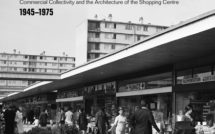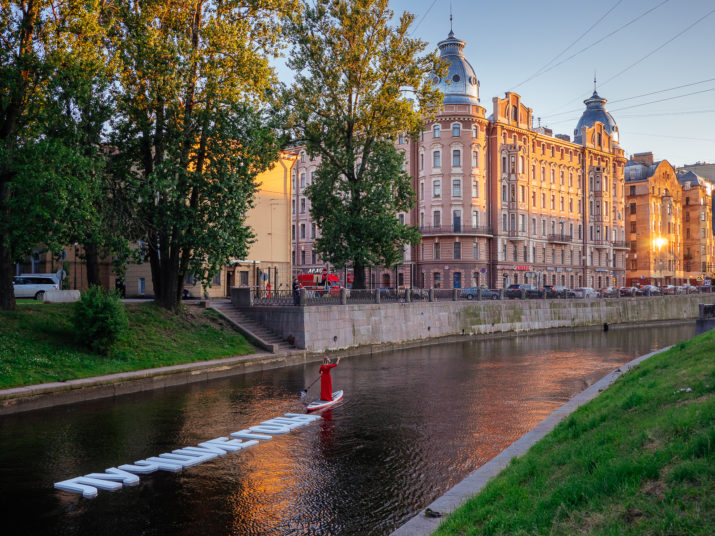
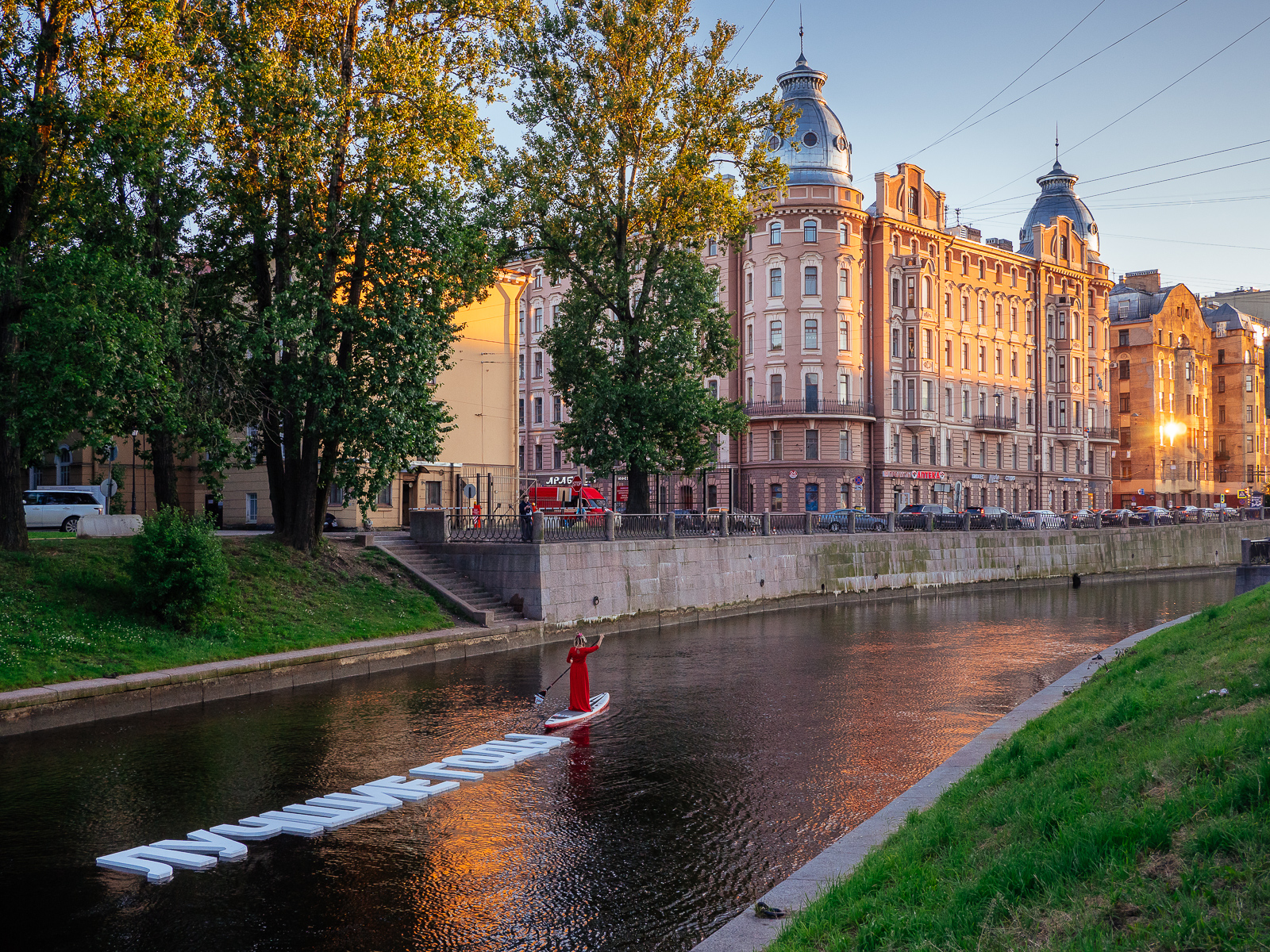
This is part of our special feature, Contemporary Urban Research in the European City.
Disappearance of public space in cities due to their privatization and commoditization has become a truism in the twentieth century. What is less discussed is another danger — lack of publics, which leads to the deficiency of demand for public space. As Alexis de Tocqueville put it once, “Individual is the citizen’s worst enemy;” an even worse enemy of the latter is a consumer. But citizens need a space — to come, to meet, to act, to practice public life. Therefore most of us agree, cities need more public spaces, but how do public spaces emerge? They should not be seen as passively “existing” — and waiting to be “discovered.” Because public spaces are created by publics — this is the only way they exist. Public space is anywhere public life unfolds. No public life means, no public space. In other words, emergence of public spaces in cities depend on activity of people.
The act of claim — verbal and non-verbal — of public space is the very process of its creation. Claim is a form of intervention that happens via bringing particular meanings and actions into a space. Such an intervention, as an act based on public conscious and way of acting, brings a public space into existence:, turn just “urban space” into an “urban public space”, makes a “limbo” urban space a public one. That is why people concerned about public life, public sphere, and publics in our societies are anxious about urban interventions.
Production of space and urban interventions in Berlin and St.-Petersburg
According to Henri Lefebvre (Le Droit à la ville (1968), in: Writing on cities, 1996) there are several forms of making urban space — including a public one. Physical intervention and appropriation of already existing (potential, limbo) urban space and turning it into public one by the very fact of such an intervention and act — is one form. Another form is less material and more complicated and consists of an interference into complex procedures of “production of urban space” — as the latter is produced, in according to Lefebvre (The production of space 1993 (1974)) at least at three levels — of “perceived space,” “conceived space,” and “lived space.” While the first type of interventions (into material texture of the city – appropriation) can be – according to another French philosopher Michael de Certeau (The practice of everyday life, 1984) — called “tactical,” the second form of intervention could be called “strategic” intervention (de Certeau did not mention this second type, but we believe, we can suggest such a term). The former appears for a short time at an “alien” urban space belonging to the “system,” creates a new “situation,” and disappears soon (leaving traces in space or only in the minds of people). The latter – strategic intervention – interferes with the mechanisms of decision making and tries to appropriate modes and tools of production of space. Our observation shows that difference between urban interventions in St.-Petersburg and Berlin is organized around such a distinction — between tactical and strategic interventions.
Saint Petersburg
In St. Petersburg, urban activists are mainly focused on tactical interventions in the space, trying to turn it into a public one by their direct unmediated activities within material tissue of the city or its ephemeral dimensions of particular “city situations.” Tactical interventions are limited to time and space, and, despite the fact that they change materiality, temporality and mood of the city life, they seem to be “an exception that proves the rule” of the dominant ways of organizing a city life and producing a city space.
Case: ART PROSPECT PUBLIC ART FESTIVAL
The Art Prospect is a contemporary public art festival. It is still a rare example of legal intervention in urban public spaces that happens every year, but lasts a very short time. It was initiated by non-for-profit organization CEC ArtsLink in 2012 (and invites international and local artists to work with urban environment and with unsuspecting audiences, who rarely view and/or interact with contemporary art works. One of the missions of the festival is “to stretch the boundaries of communication in the public realm by presenting artworks in all disciplines outside the confines of traditional public space regulations. Art Prospect reminds us that public spaces function as the epicenter for diverse social interactions and the unfettered exchange of ideas. Participating artists stretched the definition of art and redefined their role as instigator, collaborator, activist and designer while enticing the public to participate in curious and exciting ways. Festival tries to create and to suggest citizens successful and replicable models of civic initiatives that demonstrate how collaboration between culturally, economically, and age diverse citizens and artists on creative projects that address social concerns and improve their urban environment can contribute to a stronger civil society.” Unfortunately, the Art Prospect is changing the environment of the city for 4 days only – all works have to be removed after. Even the attempts of inhabitants of the neighborhood, where the festival takes place, to keep art objects after the conclusion of the event, are doomed to failure. That was a fate of a “Tree house” project-object by an artist Peter Shvetsov. The simple wooden house built by artist on a tree in one of St.-Petersburg courtyards became a little miracle for the people, especially for children and teenagers.
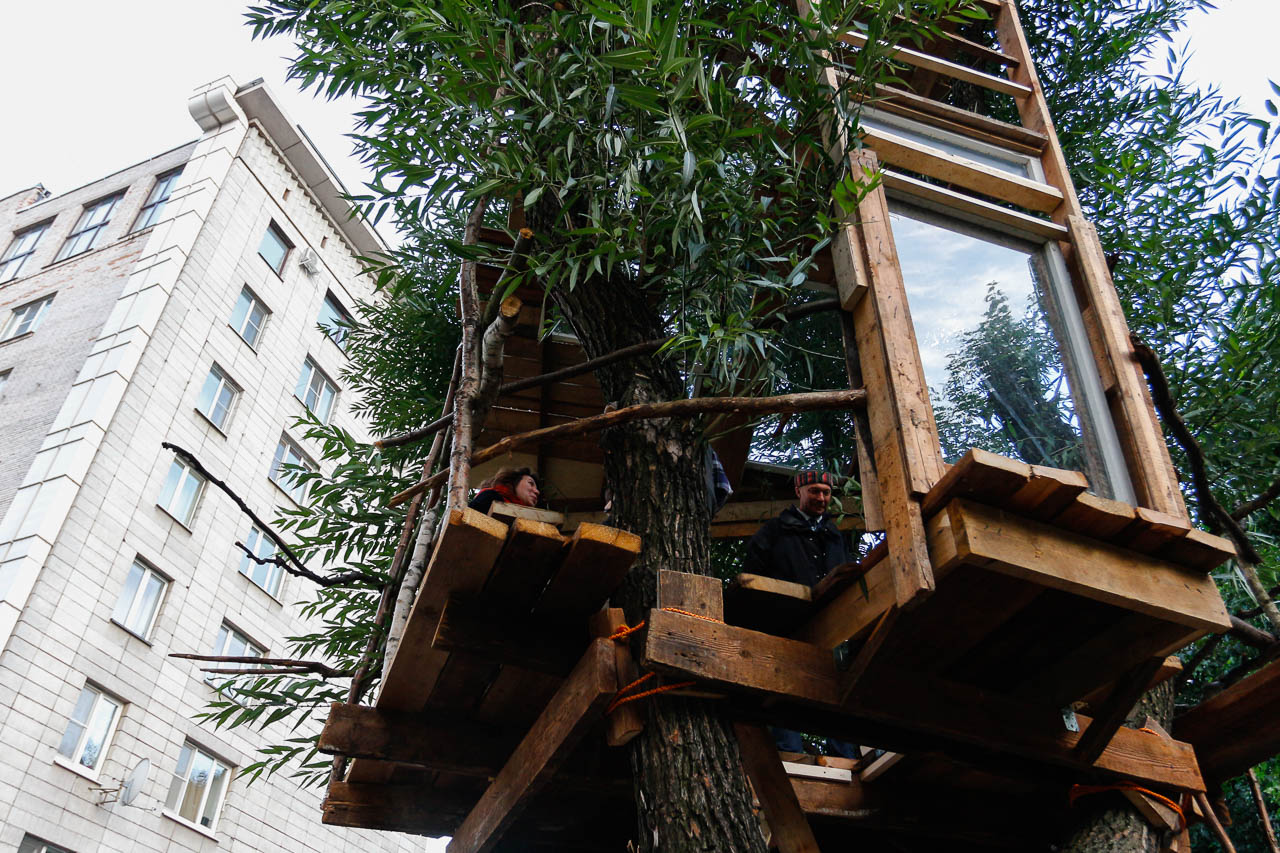
Figure 1: “Tree house” by Peter Shvetsov, a photo by Uliana Yastrebova
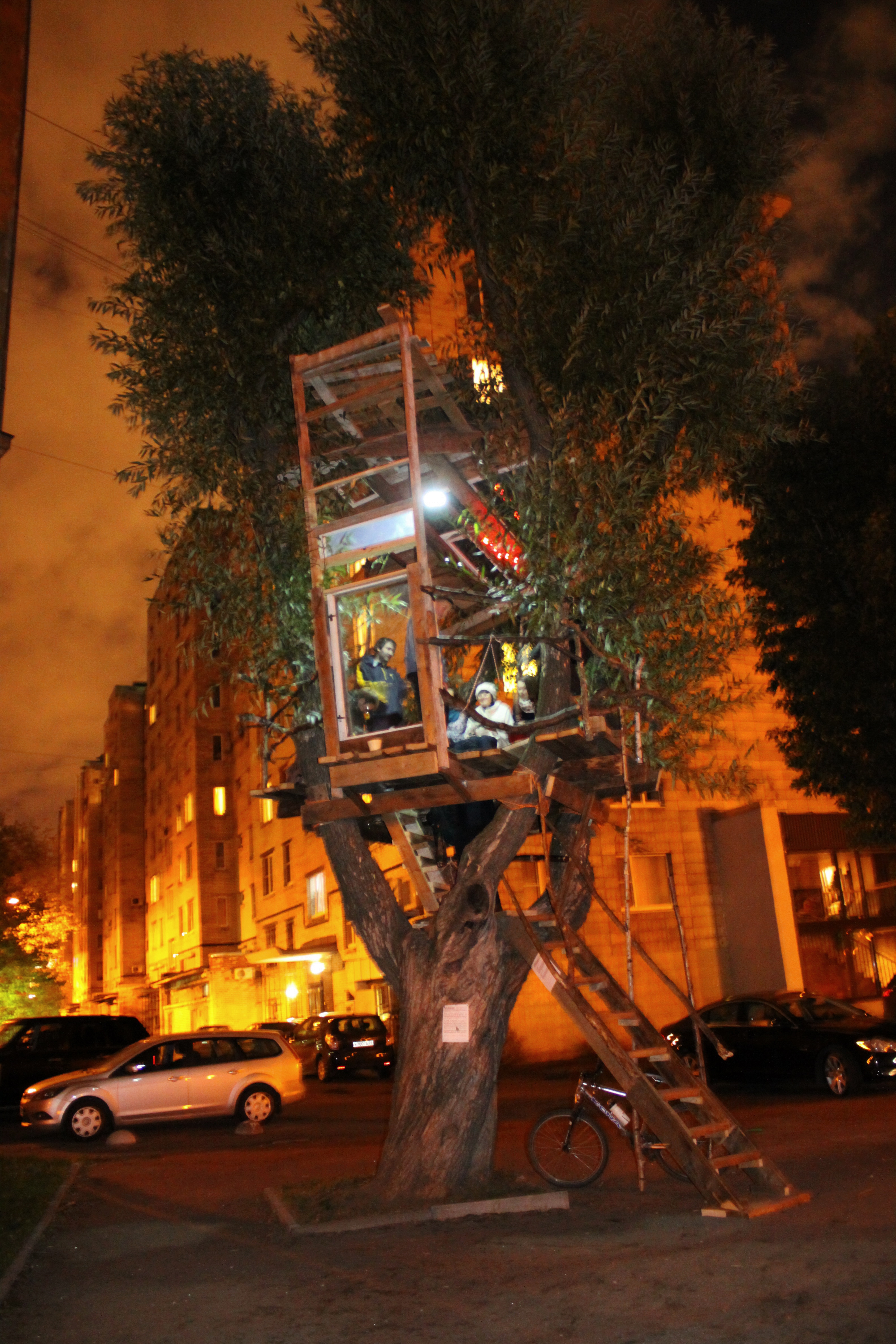
Figure 2: “Tree house” by Peter Shvetsov, a photo by Uliana Yastrebova
Within festival days, the Tree house turned into a local center of communication; dwellers of the surrounding houses started decorating it by bringing elements of interior — carpets, flowers, books, in order to make it cozy. By the end of the Art Prospect neighbors — most of whom hardly talked to each other before the festival — united and signed a petition calling city authorities to keep the Tree house. This initiative failed: conditions of the “festival” as a format of an event requires removal of all footprints of it as the event is over. The Tree house and the Art Prospect Festival make life in the city, life of city-zens and city-zens themselves different; unfortunately, the events only last for a few days. Perhaps, this limitation is the condition that makes unusual things possible in the city space — otherwise strictly controlled by authorities. However, activities around a festival that involved inhabitants – in the above cited situation, from visiting Tree house to signing petition to protecting it from deconstruction – definitely awakened citizens within city dwellers. Tactic interventions have such a potential.
Case: DIALOG AT WATER WORKSHOP
Agreed and sanctioned festivals is not the only form of tactical intervention into the urban space of St.-Petersburg. Spontaneous unsanctioned activities take place too. Most of them are not political in a narrow sense of the word, although they refer to the “right to the city” concept. The latter is understood as a right for different groups of people to express themselves in urban space of their city. Self or group expression implies new meanings and actions brought into a city space — turning it into a public one. Such interventions are less predictable and could be very creative. They construct unusual situations that change city “here and now,” although their initiators hope to influence participants and observers, who (hopefully) will start thinking of the city and act in it in a new way. In the summer of 2018, a group of young people led by the authors of this article, performed an intervention on the bank of a small river Karpovka in one of the central districts of St. Petersburg. This place used to be disconnected from the city’s pedestrian routes for a long time, since the area belonged to the powerboating community and was fenced. In the summer of 2017, the fence was dismantled. But the citizens still do not use this peaceful natural area. Activists wanted to provoke reflections about the place, active perception of the Karpovka embankment as well as the city water areas in general. A “festival” has been chosen by urban activists at a first stage as a familiar and conventional (even legal and sanctioned) form of bringing unusual activity to the city space. Rafting on do-it-yourself rafts, lecturing on the water and urban development, and artistic works by street artist Vladimir Abikh became the first activities performed within the framework of the festival “Your water” that happened on a summer weekend in the newly discovered part of a riverbank.
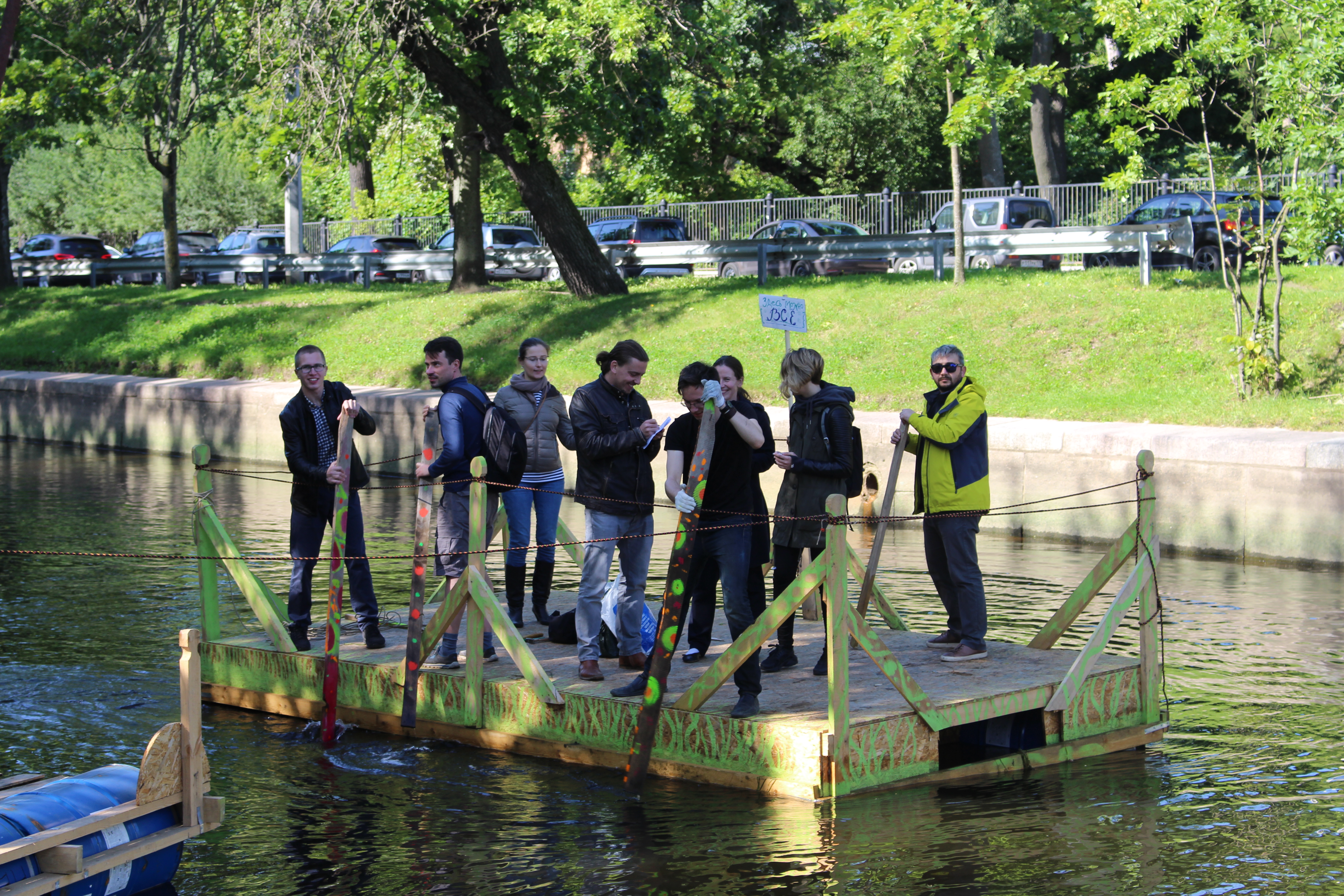
Figure 3: The Situationist Raft, a photo by Jhon Mateo-Magkilat
But there was an “after festival” life of an area too. Several months later, during the “peer-to-peer learning by doing” workshop for urban activists titled “Dialog at Water”, some of the participants spontaneously recognized that the situation itself could make people rethink the river. What formed the basis of the situation was the wooden raft used as a communication venue. Connecting people and riversides, it was both an object and a metaphor; it has been transformed into a water-based public space, an area of uncertainty and a territory of potential that goes beyond the regulations on a land. Interestingly, the action had its own continuation. The raft has carried on its mysterious existence. It appeared here and there in different parts of the river, used by people who started performing their own “right to the city” without asking any permissions. The situation initiated by activists has changed the way some people perceive city and water, thereby turning them into active citizens.
Berlin
Berliners have been practicing tactical interventions for decades now, and, recently, activists turned to the strategic interventions into the mechanisms of production of space in the city.
Case: TEMPELHOFER FELD
After the Tempelhof airport in (West) Berlin was closed in 2008, a temporary use concept was suggested for the 300 hectares of its field. For several years, it hosted various citizen initiatives, such as urban gardening, sports and social events, among others. Meanwhile, the Berliners formed an initiative group “100% Tempelhofer Feld” (2011), aimed at protecting the territory from the planned real estate development and from forthcoming gentrification of the surrounding neighborhoods. For achieving this goal, the grass-root initative group decided to apply the new law by means of a city referendum. After several months of citizen volunteer and collective work, they succeeded to collect 200.000 signatures by Berliners for the support of initiation of the referendum process. The Referendum held on the 25th of May 2014 triggered an unexpectedly high number of 740.000 Berliners voting for the prohibition of any construction done on the territory of Tempelhof field. Both the real estate developers and the Senate had to abandon their plan to build 300 hectares of open space in the city center of Berlin. Today, the field of Tempelhof has turned into one of the most popular public spaces, where Berliners unfold various activities.
The referendum for the protection of Tempelhof field became a very significant event for many Berliners concerned about city development policy and looking for a tool to affect it. The successful referendum has been seen as an efficient tool. After May 2014, several new referendum initiatives (from the improvement of bicycling routes and infrastructure to the extension of social housing in the city) were created by different groups of citizens in Berlin. However, the referendum also provoked serious anxiety from the side of the developers and Senate. City government-initiated work aimed at changing the law on a referendum in Berlin for Senate to possibly call the decision of any referendum back, as well as for making new referendums happen more difficult technically. Therefore, the struggle around Tempelhof field takes place now not at the level of direct spatial interventions, but at the level of the city legislation. In this case, we see a referendum itself as an urban intervention of a totally different type: it is an intervention at a structural, systematic, strategic level of decision making. This is why we call this an example of strategic intervention.
Conclusion
The “chicken-egg” dilemma of urban public space today is: what is the primary and ultimate precondition that can serve as a cause for another? Is it public space – as an infrastructure where publics can appear, practice public life and get consciousness, or is it publics themselves – as an agent who can (and preferable does) create public space for its needs.
Our answer is as follows: such a question is wrong and the “dilemma” is fake and misleading. The answer lies in dialectics, i.e. in the production of public(s) in the process of creation of public space as the best way of bringing both publics and public spaces back to our cities. Intervention aimed at creation of public life (be it tactical or strategic) is a practice that turns a “regular” urban space into a public urban space. And as far as such an intervention is performed by people, it leads to the production of publics – the “city-zens” are being transformed into Tocqueville’s “citizens,” who will be able to produce new public spaces afterwards.
Post Scriptum
Henri Lefebvre (1968) distinguished a city as oeuvre (in terms of creative process and use value) from the city as a “product” (in terms of exchange value of the market) – and criticized therefore the process of “production” of the space – i.e. of making it a “product”. Following him, we prefer using the term “creation” as far as public space is concerned instead of “production,” as we believe public spaces should be created, not produced in according to the capitalist and neo-liberalist logic of “exchange value.” And this is why, again following Lefebvre, we put artists and artistic practices in the focus of our analysis of creative urban interventions.
Lilia Voronkova is a social scientist and curator. She has been working in Centre for Independent Social Research (CISR [4], St.-Petersburg, Russia) since 2003 as a researcher, and since 2011 – as a coordinator of interdisciplinary art / social science (leading projects and curating exhibitions). In 2013 Lilia became a co-founder of an interdisciplinary network of professionals working on urban research and urban planning Open Urban Lab. Lilia is a member of TACT [5] network. In 2009 Lilia Voronkova received a prestigious Bundeschancellor scholarship by Alexander von Humboldt Foundation. In 2013 together with Oleg Pachenkov and colleagues form Open Urban Lab she edited and published a book devoted to the methodology of pre-planning research for urban public spaces “SAGA Book. Transformation of public space” (in Russian). Currently she works in interdisciplinary projects on urban research and development; one of them is the TACT-Project “Claiming the public space” funded by the Alexander von Humboldt Foundation (2016-2018) and together with Oleg Pachenkov leads a series of training programs for young urban activists from Russian cities (Stadt im Dialog/Urban dialog).
Oleg Pachekov is a director of the Centre for applied research (CeAR) at European university at St.-Petersburg. He received his doctorate (Candidate of Science in sociology) at the Sociology department of St.-Petersburg State University in 2009. Now Oleg is a member of an interdisciplinary expert platform Open Urban Lab, a leading researcher of a state-independent research institute Centre for independent social research (CISR, St.-Petersburg, Russia). ), a member of TACT network. In 2005, Oleg Pachenkov received the prestigious Bundeschancellor scholarship by Alexander von Humboldt Foundation. In 2013, he edited a collection of chapters “Urban Pubic Space. Facing Challenges of Mobility and Aesthicization.” Currently he is working mainly in the fields of urban studies and interdisciplinary art / social science projects as well as consulting on urban development. Since 2016, he leads together with Eszter Gantner the TACT-Project “Claiming the public space” funded by the Alexander von Humboldt Foundation (2016-2018). Since spring 2018, Oleg is leading the Russian team in the international research project “Estates After Transition” devoted to the investigation of housing in socialist and post-socialist cities.
Cover Photo: Best Years by Vladimir Abikh
References:
de Certeau, M. The sociology of everyday life. Berkeley: University of California Press, 1984
Lefebvre, H. Writing on cities. Selected, translated and introduced by Eleonore Kofman and Elizabeth Lebas. Blacwell Publishers, 1996. Part 2: The right to the city (Le droit à la ville, 1968).
Lefebvre H. The production of space. Blackwell, Oxford. 1991
* The reported study was funded by RSSF according to the research project № 16-03-00508 «Quality of Urban Space: Vectors of Civil Initiative Groups Development in Russia and Germany» and in the frames of the research project “Claiming the public space”, based on TACT and at the Georg Simmel Center (Humboldt University of Berlin ) funded between 2016-2018 by Alexander von Humboldt Foundation.
Published on May 1, 2018.

